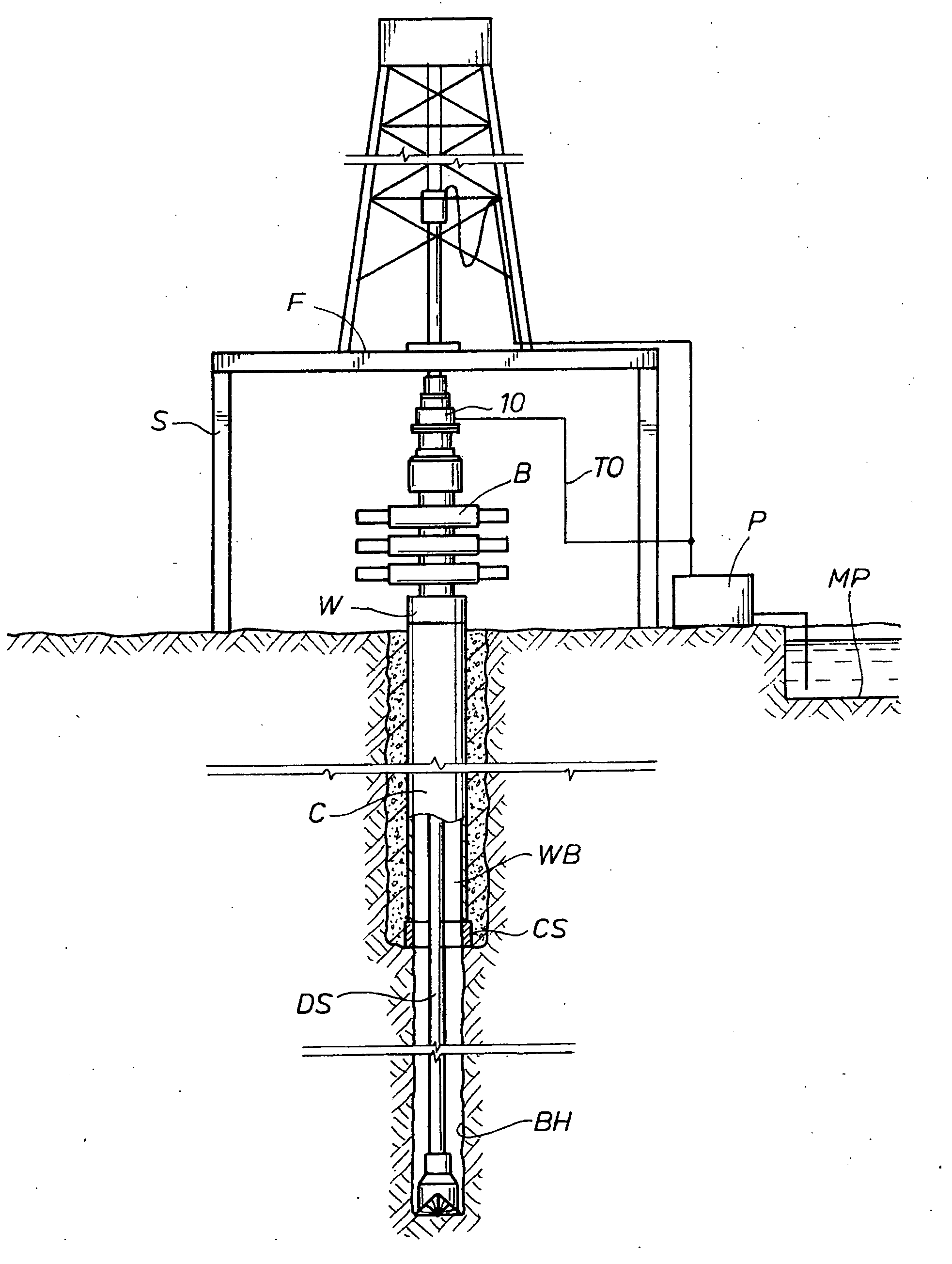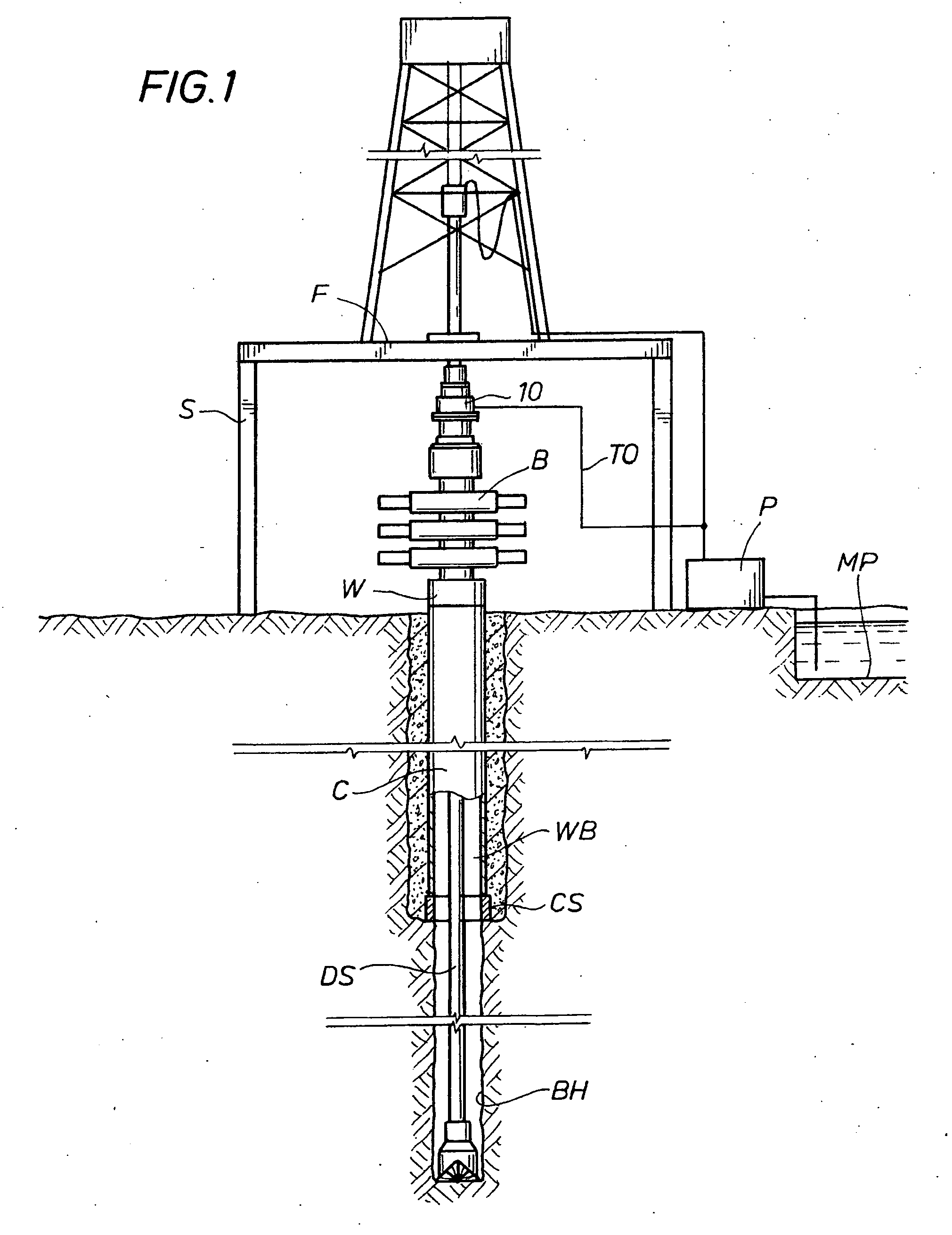Drilling with a high pressure rotating control device
a control device and high-pressure technology, applied in the direction of survey, insulation, borehole/well accessories, etc., can solve the problems of more tool joints, wear of the interior sealing surface of the sealing element, and inability to fully meet the needs of drilling, so as to achieve the effect of safe operation and higher safety factor
- Summary
- Abstract
- Description
- Claims
- Application Information
AI Technical Summary
Benefits of technology
Problems solved by technology
Method used
Image
Examples
Embodiment Construction
[0046]The DTTL method and the pressure sharing RCD systems may be used in many different drilling environments, including those environments shown in FIGS. 1 and 2. Exemplary drilling rigs or structures for use with the invention, generally indicated as S, are shown in FIGS. 1 and 2. Although a land drilling rig S is shown in FIG. 1, and an offshore floating semi-submersible rig S is shown in FIG. 2, other drilling rig configurations and embodiments are contemplated for use with the invention for both offshore and land drilling. For example, the invention is equally applicable to drilling rigs such as jack-up, semi-submersibles, submersibles, drill ships, barge rigs, platform rigs, and land rigs. Turning to FIG. 1, an RCD 10 is positioned below the drilling deck or floor F of the drilling rig S and above the BOP stack B. RCD 10 may include any of the RCD pressure sharing systems shown in FIGS. 7 to 17B or other adequately pressure rated RCD. The RCD, where possible, should be sized ...
PUM
 Login to View More
Login to View More Abstract
Description
Claims
Application Information
 Login to View More
Login to View More - R&D
- Intellectual Property
- Life Sciences
- Materials
- Tech Scout
- Unparalleled Data Quality
- Higher Quality Content
- 60% Fewer Hallucinations
Browse by: Latest US Patents, China's latest patents, Technical Efficacy Thesaurus, Application Domain, Technology Topic, Popular Technical Reports.
© 2025 PatSnap. All rights reserved.Legal|Privacy policy|Modern Slavery Act Transparency Statement|Sitemap|About US| Contact US: help@patsnap.com



